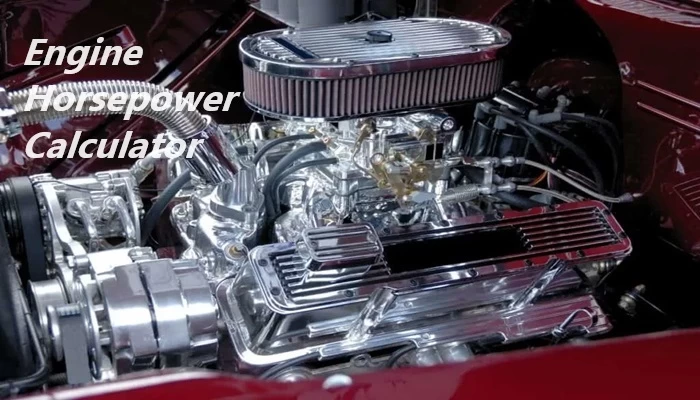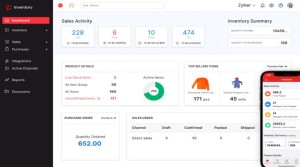Drive Smart - Decoding Horsepower for Ultimate Performance
Discover the secrets of the Elapsed Time and Trap-Speed methods for accurate horsepower measurements. Buckle up for a journey through time and technology, unlocking the power within your vehicle!

What is Horsepower?
A long time ago, there was a clever engineer named James Watt. He was the one who thought up the idea of horsepower. This happened back in the 19th century when Watt was busy creating some of the first steam engines. Now, Watt did some awe-inspiring work, and people thought he deserved recognition. So, they decided to name the unit of power after him, calling it the "watt". No, he didn't invent the light bulb, but his name is mainly linked to it.
Here's how the whole horsepower thing came about, Watt was down in a mine, and they were using horses to pull wagons loaded with coal. He was curious about how much coal a pony could pull in a wagon over a certain distance. To figure this out, he watched how far a horse could pull 22,000 pounds of coal in just one minute. After observing this, Watt decided to set a standard. He increased the amount to 33,000 foot-pounds in a minute and called it horsepower. It might seem like a random number, but it became the way people measured the work engines could do. Before Watt, this was the first time anyone had really measured this stuff. A horse pulling a wagon of coal out of a mine. With one horsepower of effort, that horse could pull 330 pounds of coal a distance of 100 feet in just one minute.
Engine Horsepower
Engine horsepower is a measure of the power an engine produces. It tells us how much work the machine can do. Irrespective of old vehicles, modern vehicles have engines with horsepower ratings that vary. You'll find small cars with, say, around 100 horsepower, and then you've got these beefy trucks or sports cars boasting 300, 400, or even more horses. The higher the horsepower, the more capable your ride is in terms of speed and performance. It's like the difference between a gentle breeze and a full-blown gust of wind when you hit the gas pedal. So, when you're car shopping, keep an eye on that horsepower number - it's a critical factor in how your vehicle is going to handle the road.
Gross Horsepower
Gross horsepower is how much work an engine does when we test it on a machine, not in a real car with all its parts. Net horsepower is when we test the motor with things like water pumps and power steering pumps connected. Net horsepower also considers power losses from things like the transmission and clutch, which can make the actual horsepower lower than the significant number we first measured.
Horsepower Calculator
An Engine Horsepower Calculator is like a digital wizard that helps you figure out how much power your vehicle's engine is packing. It takes into account a bunch of factors like torque, RPM (revolutions per minute), and a few other secret ingredients to give you a neat number in horsepower. When it comes to evaluating an engine's performance, figuring out its horsepower is a vital piece of the puzzle. There are two popular methods used to estimate engine horsepower - the Elapsed Time (ET) Method and the Trap-Speed Method.
Elapsed Time (ET) Method
The ET Method focuses on measuring the time it takes for a vehicle to cover a quarter-mile from a standstill. The formula involves the vehicle's weight, the elapsed time, and a correction factor that considers track conditions, altitude, and temperature. Precise weight measurement and thoughtful consideration of the correction factor are crucial for accurate results.
Trap-Speed Method
On the other hand, the Trap-Speed Method looks at the speed a vehicle reaches at the end of a measured distance, typically the last 66 feet of a quarter-mile. The formula includes the vehicle's weight, the trap speed, and a constant factor. Ensuring accurate weight measurement and precise trap-speed readings are essential for obtaining reliable horsepower calculations. In both methods, getting the weight right is a critical factor. Whether it's measuring the vehicle's weight for the ET Method or the Trap-Speed Method, an accurate value is fundamental to the equation. If you want to see other calculators, you can visit CoolCalculator.

What is Horsepower?
A long time ago, there was a clever engineer named James Watt. He was the one who thought up the idea of horsepower. This happened back in the 19th century when Watt was busy creating some of the first steam engines. Now, Watt did some awe-inspiring work, and people thought he deserved recognition. So, they decided to name the unit of power after him, calling it the "watt". No, he didn't invent the light bulb, but his name is mainly linked to it.
Here's how the whole horsepower thing came about, Watt was down in a mine, and they were using horses to pull wagons loaded with coal. He was curious about how much coal a pony could pull in a wagon over a certain distance. To figure this out, he watched how far a horse could pull 22,000 pounds of coal in just one minute. After observing this, Watt decided to set a standard. He increased the amount to 33,000 foot-pounds in a minute and called it horsepower. It might seem like a random number, but it became the way people measured the work engines could do. Before Watt, this was the first time anyone had really measured this stuff. A horse pulling a wagon of coal out of a mine. With one horsepower of effort, that horse could pull 330 pounds of coal a distance of 100 feet in just one minute.
Engine Horsepower
Engine horsepower is a measure of the power an engine produces. It tells us how much work the machine can do. Irrespective of old vehicles, modern vehicles have engines with horsepower ratings that vary. You'll find small cars with, say, around 100 horsepower, and then you've got these beefy trucks or sports cars boasting 300, 400, or even more horses. The higher the horsepower, the more capable your ride is in terms of speed and performance. It's like the difference between a gentle breeze and a full-blown gust of wind when you hit the gas pedal. So, when you're car shopping, keep an eye on that horsepower number - it's a critical factor in how your vehicle is going to handle the road.
Gross Horsepower
Gross horsepower is how much work an engine does when we test it on a machine, not in a real car with all its parts. Net horsepower is when we test the motor with things like water pumps and power steering pumps connected. Net horsepower also considers power losses from things like the transmission and clutch, which can make the actual horsepower lower than the significant number we first measured.
Horsepower Calculator
An Engine Horsepower Calculator is like a digital wizard that helps you figure out how much power your vehicle's engine is packing. It takes into account a bunch of factors like torque, RPM (revolutions per minute), and a few other secret ingredients to give you a neat number in horsepower. When it comes to evaluating an engine's performance, figuring out its horsepower is a vital piece of the puzzle. There are two popular methods used to estimate engine horsepower - the Elapsed Time (ET) Method and the Trap-Speed Method.
Elapsed Time (ET) Method
The ET Method focuses on measuring the time it takes for a vehicle to cover a quarter-mile from a standstill. The formula involves the vehicle's weight, the elapsed time, and a correction factor that considers track conditions, altitude, and temperature. Precise weight measurement and thoughtful consideration of the correction factor are crucial for accurate results.
Trap-Speed Method
On the other hand, the Trap-Speed Method looks at the speed a vehicle reaches at the end of a measured distance, typically the last 66 feet of a quarter-mile. The formula includes the vehicle's weight, the trap speed, and a constant factor. Ensuring accurate weight measurement and precise trap-speed readings are essential for obtaining reliable horsepower calculations. In both methods, getting the weight right is a critical factor. Whether it's measuring the vehicle's weight for the ET Method or the Trap-Speed Method, an accurate value is fundamental to the equation. If you want to see other calculators, you can visit CoolCalculator.
Conversation
Latest Blogs
© Blog CoolCalculator, Explore CoolCalculator, your destination for the latest insights, tips, and updates on the world of online calculators. Stay informed and make your calculations smarter with our blog. ,
Designed
by Saad Media Team , Team Lead M.Rizwan Akhtar












